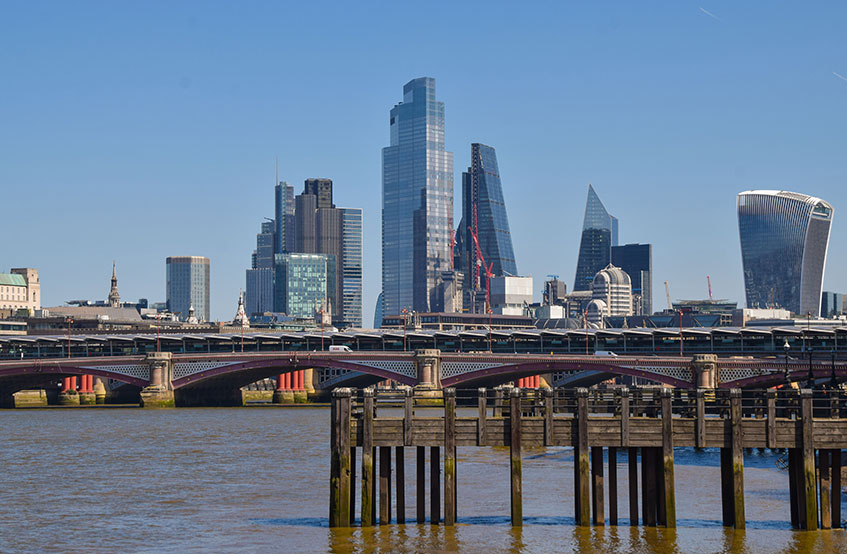If you are an investor looking for “good” buildings – those rated EPC C or above – to bring in solid rents and strong demand or are looking for a “bad” building – those rated EPC D or below – for some potential value-add investment, then the City could be the perfect playground with plenty of options for both types of buyer.
Exclusive data from EG shows that across the City of London some 57% of office stock has an EPC of D or below, giving it a “bad” rating on our health scale. On a postcode basis, EC1, was rated worst in EG’s scale with 63.7% – or 258 buildings – getting a “bad” score. The best-performing postcode was WC2 (within the City limits), which has some 56.1% of its office stock rated “good” on EG’s health scale.
Zooming out to ward level, Dowgate is the best-performing region, with 129 properties rated “good” and 88 rated “bad”, giving it an overall score of 59.4% of offices with an EPC of C or above. The worst-performing ward is Broad Street, with some 67.2% of its office stock rated EPC D or below – a whopping 195 “bad” buildings versus 94 “good” buildings.
At a cluster level, the Barbican – which comprises the wards Aldersgate, Bassishaw, Cripplegate and Coleman Street and the postcodes EC1 and EC2 – leads the way when it comes to EPC “good” offices, with some 49.7% of its 608 buildings rated C and above. Monument cluster – which comprises wards Billingsgate, Bridge, Candlewick and Langbourn and the postcodes EC3 and EC4 – is the worst-performing cluster, with 67.2% of its office stock rated EPC D and below.
Despite the rhetoric around the bifurcation of offices, demands from occupiers and investors alike for greener and more efficient buildings and legislation that will make it mandatory for commercial buildings to have an EPC rating of C or above by 1 April 2027 for any new lettings to take place, EG’s analysis shows that, so far, it is having little impact on demand or rental tone.
Looking at demand statistics from EG’s Propertylink listing platform over the past two years and our market analytics over the past 12 months, there is little correlation between the EPC health of a region and its “leaseability”, with location and amenity perhaps still being the biggest draw when it comes to occupier demand.
The E1 postcode is the most in-demand area of the seven major postcodes analysed within the City but it has more than 56% of its office stock rated with an EPC of D or below. However, the differential between asking rents and achieved rents is the lowest of all postcodes analysed, at just 0.3% – despite the area having one of the lowest levels of availability at 2.9m sq ft.
WC2, around Smithfield Market, St Bart’s Hospital and the Rolls Buildings, has the lowest level of demand, according to EG’s score, but tops the list when it comes to percentage of “good” buildings, with 56.1% rated C or above. It is also commanding a sizeable uplift on market rents, with average achieved rents reaching £74.77 per sq ft, off an average asking rent of £60.57 over the past 12 months.
Regardless of the impact of EPC ratings on demand or rental tone, legislation will stop deals at buildings rated C or below from 2027 and B or below from 2030. An EG investigation in September 2022 found more than 72.8m sq ft of commercial space across London would fail to meet an EPC B rating by 2030, leading to a potential rental loss of £3.6bn.
EPC and DEC certificates are now available for all properties listed on EG Radius, visit www.eg.co.uk/esg-data/ to find out more
To send feedback, e-mail newsdesk@eg.co.uk or tweet @EGPropertyNews











